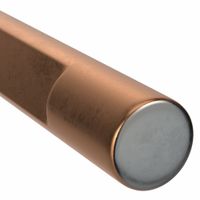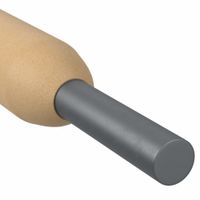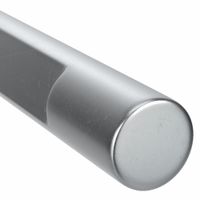Call +(254) 703 030 000 / 751 483 999 / 721 704 777
.....Read More
Frequently Asked Questions
What are the different types of filler metals used in welding?
Filler metals are crucial in welding, serving as the material that joins two metal pieces. The types of filler metals vary based on the welding process and the materials being joined. Here are the main types:
1. **Stick Electrodes (SMAW):** Used in Shielded Metal Arc Welding, these are coated rods that melt to form the weld. Common materials include mild steel, stainless steel, and cast iron.
2. **Solid Wires (GMAW):** In Gas Metal Arc Welding, solid wires are used with a shielding gas. They are typically made of carbon steel, stainless steel, or aluminum.
3. **Flux-Cored Wires (FCAW):** These wires have a flux core that provides shielding. They are used for welding thicker materials and are available in self-shielded and gas-shielded varieties.
4. **Tungsten Electrodes (GTAW):** Used in Gas Tungsten Arc Welding, these non-consumable electrodes are made of tungsten. Filler rods of various materials can be added manually.
5. **Submerged Arc Welding Wires (SAW):** These are used with a granular flux that covers the weld. The wires are typically made of carbon steel or alloy steel.
6. **Brazing and Soldering Filler Metals:** These include alloys like brass, bronze, and silver, used in processes that join metals without melting the base materials.
7. **Specialty Alloys:** For specific applications, such as aerospace or nuclear, specialty alloys like Inconel or Hastelloy are used.
8. **Nickel and Nickel Alloys:** Used for their corrosion resistance and high-temperature strength, often in chemical processing and marine applications.
9. **Copper and Copper Alloys:** Used for their electrical conductivity and corrosion resistance, often in electrical and plumbing applications.
Each type of filler metal is selected based on factors like the base material, welding process, mechanical properties, and environmental conditions.
How do I choose the right filler metal for my welding project?
To choose the right filler metal for your welding project, consider the following factors:
1. **Base Material Compatibility**: Match the filler metal to the base materials being welded. Use filler metals with similar chemical and mechanical properties to the base metals to ensure compatibility and prevent issues like cracking or corrosion.
2. **Welding Process**: Different welding processes (e.g., MIG, TIG, Stick) require specific types of filler metals. Ensure the filler metal is suitable for the welding process you plan to use.
3. **Mechanical Properties**: Consider the required mechanical properties such as tensile strength, ductility, and toughness. The filler metal should meet or exceed the mechanical requirements of the weldment.
4. **Service Conditions**: Evaluate the conditions the weld will be exposed to, such as temperature, corrosion, and wear. Choose a filler metal that can withstand these conditions without degrading.
5. **Joint Design and Fit-Up**: The joint design and fit-up can influence the choice of filler metal. For example, a joint with a tight fit may require a filler metal with good flow characteristics.
6. **Code and Specification Requirements**: Adhere to any relevant industry codes and specifications, which may dictate specific filler metals for certain applications.
7. **Availability and Cost**: Consider the availability and cost of the filler metal. While it’s important to choose the right filler metal, it should also be readily available and within budget.
8. **Manufacturer Recommendations**: Consult the base material and filler metal manufacturers for recommendations. They often provide guidelines and compatibility charts.
9. **Testing and Qualification**: Conduct tests or use qualified procedures to ensure the chosen filler metal performs as expected in your specific application.
By carefully evaluating these factors, you can select the appropriate filler metal for your welding project, ensuring strong, durable, and reliable welds.
What is the difference between MIG, TIG, and stick welding filler metals?
MIG (Metal Inert Gas), TIG (Tungsten Inert Gas), and stick welding (Shielded Metal Arc Welding) use different types of filler metals, each suited to their specific processes and applications.
MIG welding uses a continuous solid wire electrode fed through a welding gun. The wire is typically made of mild steel, stainless steel, or aluminum, and is often coated with copper to prevent oxidation and improve electrical conductivity. The wire serves as both the electrode and the filler material, melting to form the weld. MIG welding is known for its speed and efficiency, making it ideal for large-scale production and thin materials.
TIG welding employs a non-consumable tungsten electrode to produce the weld. The filler metal, when needed, is a separate rod manually fed into the weld pool. TIG filler rods are available in various materials, including aluminum, stainless steel, and carbon steel, chosen based on the base metal. TIG welding provides high precision and control, making it suitable for thin materials and applications requiring high-quality welds, such as aerospace and automotive industries.
Stick welding uses consumable electrodes coated with flux. The electrode core is typically made of steel, stainless steel, or cast iron, while the flux coating provides shielding gas and slag to protect the weld from contamination. Stick welding is versatile and effective for outdoor and fieldwork, as it is less sensitive to wind and requires minimal equipment.
In summary, MIG welding uses a continuous wire as filler, TIG welding uses separate filler rods, and stick welding uses flux-coated electrodes. Each method's filler metal is selected based on the welding process, base material, and desired weld properties.
Can filler metals be used to join dissimilar metals?
Yes, filler metals can be used to join dissimilar metals, but the process requires careful consideration of several factors to ensure a successful and durable joint. The primary challenge in joining dissimilar metals is the difference in their physical and chemical properties, such as melting points, thermal expansion coefficients, and corrosion resistance. These differences can lead to issues like cracking, distortion, or galvanic corrosion.
To address these challenges, the selection of an appropriate filler metal is crucial. The filler metal should be compatible with both base metals and possess properties that can bridge the differences between them. For instance, it should have a melting point that is lower than that of the base metals to prevent excessive heat input and potential damage. Additionally, the filler metal should accommodate the thermal expansion differences to minimize stress during heating and cooling cycles.
Commonly used filler metals for joining dissimilar metals include nickel-based alloys, silver-based alloys, and certain copper-based alloys. Nickel-based fillers are particularly effective due to their excellent corrosion resistance and ability to withstand high temperatures. Silver-based fillers are often used for their good wettability and ability to form strong joints at relatively low temperatures.
The welding or brazing process also plays a significant role in the success of joining dissimilar metals. Techniques such as TIG (Tungsten Inert Gas) welding, MIG (Metal Inert Gas) welding, and brazing are commonly employed. Preheating and post-weld heat treatment may be necessary to reduce thermal stresses and improve joint integrity.
In summary, while filler metals can be used to join dissimilar metals, the process requires careful selection of the filler material and appropriate welding techniques to ensure a reliable and durable joint.
What are the common alloys used in brazing and soldering filler metals?
Common alloys used in brazing and soldering filler metals include:
1. **Silver Alloys**: Often used in brazing, silver alloys typically contain silver, copper, zinc, and sometimes tin. They are known for their excellent flow characteristics and ability to join dissimilar metals.
2. **Copper Alloys**: These are widely used in brazing, especially for joining copper and its alloys. Common compositions include copper-phosphorus and copper-silver-phosphorus, which are self-fluxing on copper.
3. **Aluminum Alloys**: Used for brazing aluminum, these alloys often contain silicon and/or zinc. They are designed to have a melting point below that of aluminum to prevent melting the base metal.
4. **Nickel Alloys**: Employed in high-temperature applications, nickel-based brazing alloys often include elements like chromium, boron, and silicon. They are used for joining stainless steels and superalloys.
5. **Gold Alloys**: Used in specialized applications, gold-based brazing alloys provide excellent corrosion resistance and are often used in electronics and aerospace industries.
6. **Tin-Lead Alloys**: Traditionally used in soldering, these alloys have been largely replaced due to lead's toxicity. They were known for their low melting points and good wetting properties.
7. **Lead-Free Alloys**: In response to environmental concerns, lead-free solders have become prevalent. Common compositions include tin-silver-copper (SAC) and tin-copper, which offer good mechanical properties and reliability.
8. **Zinc Alloys**: Used for soldering aluminum and other metals, zinc-based solders often include aluminum and copper to improve performance.
9. **Cadmium Alloys**: Once popular for their low melting points, cadmium-containing brazing alloys are now restricted due to toxicity concerns.
These alloys are selected based on factors like melting temperature, compatibility with base metals, mechanical properties, and environmental considerations.
How does the composition of a filler metal affect the welding process?
The composition of a filler metal significantly influences the welding process by affecting the mechanical properties, corrosion resistance, and overall quality of the weld. The filler metal must be compatible with the base materials to ensure a strong bond and prevent defects.
1. **Mechanical Properties**: The filler metal's composition determines the tensile strength, ductility, and toughness of the weld. For instance, a filler metal with higher carbon content can increase strength but may reduce ductility, making the weld more brittle.
2. **Corrosion Resistance**: Elements like chromium, nickel, and molybdenum in the filler metal enhance corrosion resistance. This is crucial for applications in harsh environments, such as marine or chemical industries, where the weld must withstand corrosive elements.
3. **Thermal Expansion and Conductivity**: The filler metal's thermal properties should match those of the base metal to minimize thermal stresses and distortion during cooling. Mismatched thermal expansion can lead to cracking or warping.
4. **Metallurgical Compatibility**: The filler metal must be metallurgically compatible with the base metals to prevent issues like hot cracking or phase imbalances. For example, using a filler metal with similar alloying elements can help maintain a stable microstructure.
5. **Weldability**: The ease of welding is affected by the filler metal's composition. Elements like silicon and manganese can improve fluidity and deoxidation, leading to smoother welds with fewer inclusions.
6. **Cost and Availability**: The choice of filler metal also depends on cost and availability. Exotic alloys may offer superior properties but can be expensive and hard to source.
In summary, selecting the appropriate filler metal composition is crucial for achieving desired weld characteristics, ensuring structural integrity, and meeting specific application requirements.
What safety precautions should be taken when handling filler metals?
When handling filler metals, several safety precautions are essential to ensure a safe working environment:
1. **Personal Protective Equipment (PPE):** Always wear appropriate PPE, including gloves, safety glasses, and protective clothing, to prevent skin contact and eye injuries from metal particles or sharp edges.
2. **Ventilation:** Ensure adequate ventilation in the workspace to avoid inhaling harmful fumes or dust generated during the handling and processing of filler metals.
3. **Storage:** Store filler metals in a dry, cool place to prevent contamination and degradation. Keep them in their original packaging until use to maintain their integrity.
4. **Handling:** Use proper lifting techniques and equipment to handle heavy filler metal packages to prevent physical injuries. Avoid dropping or mishandling to prevent damage and potential hazards.
5. **Labeling:** Clearly label all filler metals to avoid confusion and ensure the correct materials are used for specific applications, reducing the risk of improper welding or joining.
6. **Training:** Ensure all personnel handling filler metals are adequately trained in their use, potential hazards, and emergency procedures.
7. **Fire Safety:** Keep filler metals away from open flames or sparks, as some may be flammable or reactive. Have fire extinguishers readily available in the work area.
8. **Chemical Safety:** Be aware of any chemical hazards associated with specific filler metals and follow the safety data sheets (SDS) for handling instructions and emergency measures.
9. **Waste Disposal:** Dispose of any waste materials or used filler metals according to local regulations to prevent environmental contamination.
10. **Inspection:** Regularly inspect filler metals for signs of damage or contamination before use to ensure quality and safety in applications.
How do I store filler metals to prevent contamination?
To prevent contamination of filler metals, follow these guidelines:
1. **Environment Control**: Store filler metals in a clean, dry, and temperature-controlled environment. Avoid areas with high humidity or temperature fluctuations to prevent moisture absorption and corrosion.
2. **Packaging**: Keep filler metals in their original packaging until use. The packaging is designed to protect against contaminants and moisture. If the original packaging is damaged, transfer the filler metals to airtight containers.
3. **Segregation**: Store different types and grades of filler metals separately to avoid cross-contamination. Use clearly labeled storage bins or racks to organize them by type and size.
4. **Handling**: Use clean gloves when handling filler metals to prevent oils and dirt from contaminating the surface. Avoid touching the filler metal with bare hands.
5. **Storage Racks**: Use dedicated storage racks or cabinets that keep filler metals off the ground and away from walls to prevent exposure to moisture and dirt.
6. **Desiccants**: Place desiccants in storage areas to absorb moisture and maintain a dry environment. Regularly check and replace desiccants as needed.
7. **Inventory Rotation**: Implement a first-in, first-out (FIFO) system to ensure older filler metals are used before newer stock, reducing the risk of degradation over time.
8. **Inspection**: Regularly inspect stored filler metals for signs of contamination, such as rust or discoloration. Remove any compromised materials from storage.
9. **Documentation**: Maintain records of storage conditions and inspections to ensure compliance with best practices and facilitate traceability.
10. **Training**: Educate personnel on proper storage and handling procedures to minimize the risk of contamination through human error.
What are the signs of a poor-quality filler metal?
Signs of a poor-quality filler metal include:
1. **Inconsistent Composition**: Variations in chemical composition can lead to weak welds and poor mechanical properties.
2. **Surface Contaminants**: Presence of rust, oil, or dirt on the filler metal can cause porosity and weak bonding.
3. **Poor Packaging**: Damaged or inadequate packaging can expose filler metals to moisture and contaminants, leading to oxidation.
4. **Inconsistent Diameter**: Variations in diameter can cause feeding issues and inconsistent welds.
5. **Brittleness**: A brittle filler metal can break easily during handling or welding, indicating poor quality.
6. **Excessive Spatter**: High levels of spatter during welding can indicate impurities or incorrect composition.
7. **Poor Arc Stability**: Difficulty in maintaining a stable arc can be a sign of poor-quality filler metal.
8. **Inadequate Labeling**: Lack of clear labeling regarding composition and specifications can indicate substandard quality control.
9. **Low Ductility**: Filler metals that lack flexibility can lead to cracking in the weld.
10. **Inconsistent Wire Feed**: Irregular feeding can result from poor manufacturing processes.
11. **Corrosion**: Signs of corrosion on the filler metal can compromise weld integrity.
12. **Poor Mechanical Properties**: If the resulting welds do not meet required strength and toughness, the filler metal may be of poor quality.
13. **Excessive Fumes**: High levels of fumes during welding can indicate impurities in the filler metal.
14. **Inadequate Testing and Certification**: Lack of certification or testing documentation can be a red flag for poor-quality filler metal.
How do filler metals affect the strength and durability of a weld?
Filler metals play a crucial role in determining the strength and durability of a weld. They are materials added during the welding process to facilitate the joining of two metal pieces. The choice of filler metal affects the mechanical properties, corrosion resistance, and overall performance of the weld.
1. **Compatibility**: Filler metals must be compatible with the base metals to ensure a strong bond. Incompatible filler metals can lead to weak joints and potential failure under stress.
2. **Mechanical Properties**: The filler metal contributes to the tensile strength, ductility, and toughness of the weld. Selecting a filler metal with appropriate mechanical properties ensures that the weld can withstand operational stresses and environmental conditions.
3. **Corrosion Resistance**: Filler metals can enhance or reduce the corrosion resistance of a weld. For applications exposed to corrosive environments, choosing a filler metal with similar or superior corrosion resistance to the base metal is essential to prevent premature degradation.
4. **Thermal Expansion**: The thermal expansion properties of the filler metal should match those of the base metals to minimize residual stresses and distortion during cooling, which can affect the weld's integrity.
5. **Metallurgical Compatibility**: The filler metal should be metallurgically compatible to prevent issues like cracking, porosity, or undesirable microstructures that can compromise the weld's durability.
6. **Weldability**: Some filler metals are easier to work with, providing better flow and fusion characteristics, which can lead to higher quality welds with fewer defects.
In summary, the selection of the appropriate filler metal is critical to achieving a weld that is strong, durable, and fit for its intended application. It requires careful consideration of the base metals, operating conditions, and desired properties of the final weld.




